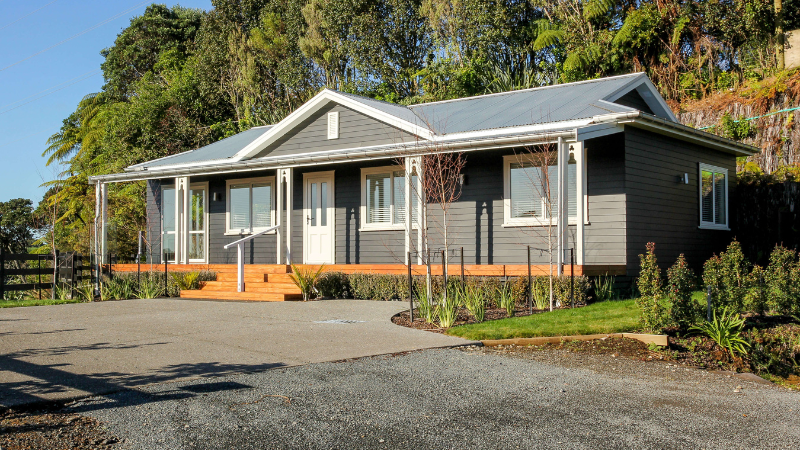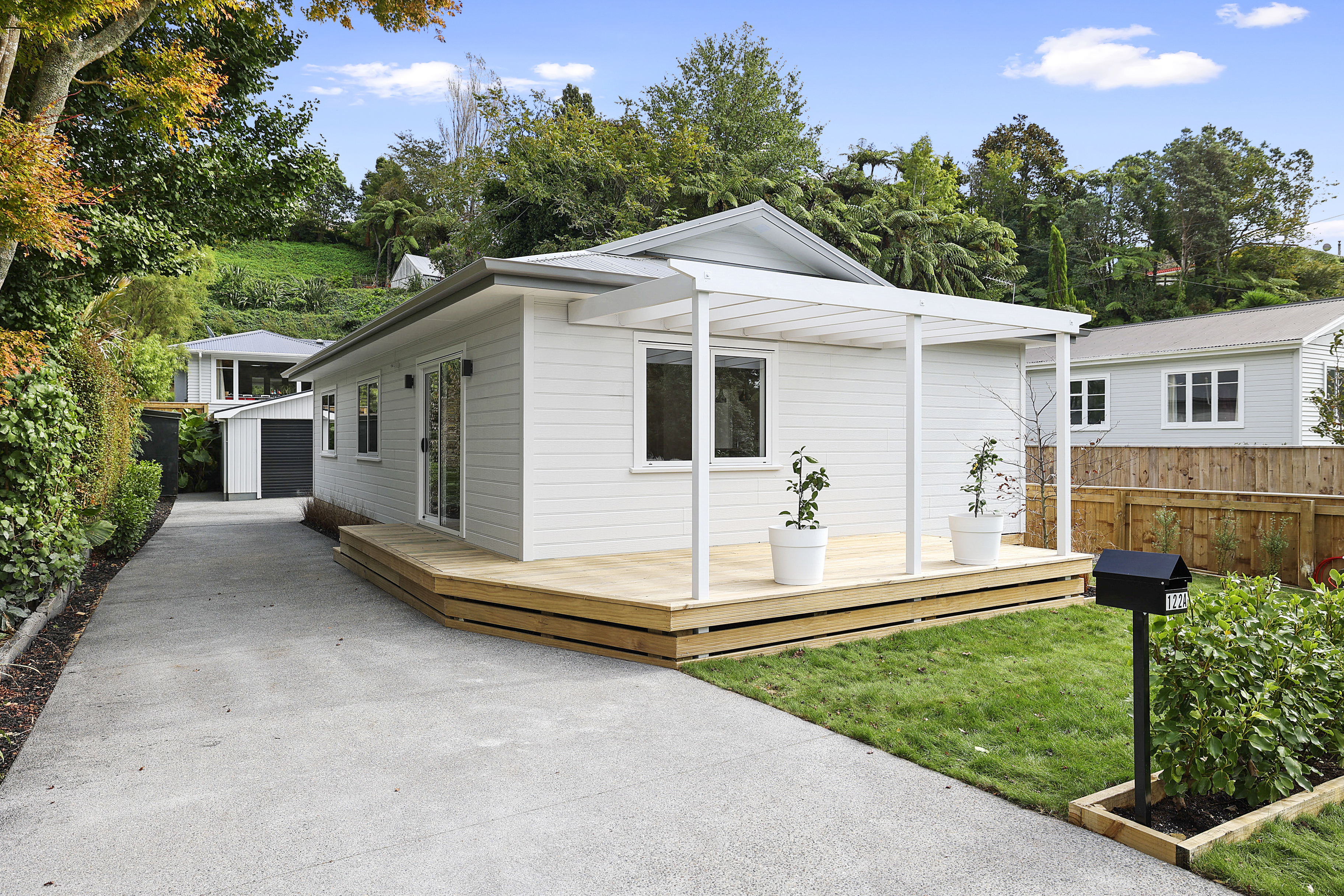How to arrange finance for a prefab home

Funding a construction project can be daunting, especially with a strict timeline and budget. Fortunately, our team is well-versed in the financing process and can guide you through it from start to finish.
In this article, we explain the process of obtaining financing for a prefab home project, including specific steps our team follows. We also explain the proactive steps you can take to increase your chances of financial approval for building or buying a new home.
What is prefab home finance?
Prefabricated home finance is the focused type of finance required to build a prefab home. Prefab homes are a little different to onsite constructed homes as they aren’t in the homeowner’s possession until they’ve left the factory. On the other hand, with an onsite build, the homeowner owns what has been built so far.
Bank finance for an onsite build is released at certain milestones, to ensure the home has reached a stage of construction before finance is released for the next phase. With a prefab home, the whole house is built in one continuous production run.
This change in the building process means the established new home loans aren’t suited to the innovative build process of prefabrication (also called offsite manufacturing). Therefore, prospective homeowners investigating funding options need to go down a slightly different path for a prefab home.
8 steps to arrange new build finance
Many prospective homeowners are daunted by the financing process but, once you know the key steps to take, it can be relatively straightforward. The following steps show what the Manor Build team follows when guiding you through the prefab financing journey.
1. Prepare a budget
The first step in arranging finance is to prepare a budget listing all personal expenditures. This doesn’t need to be complicated, however, your bank will need to be able to compare it to your actual expenditures. This will give evidence that you have the ability to budget and keep expenses in check.
The other benefit of a budget will be to give you a clear understanding of what your expenses are and what you can afford to pay off per week on a mortgage.
2. Trim unnecessary expenditure
Before approaching the bank, it’s always good practice to trim unnecessary expenditures. Eating out, buying new toys, and paid entertainment are all examples of unnecessary expenditures.
Keep in mind, you do not have to eliminate these expenses and live like a hermit – just do your best to reduce them. Your bank will view careful expenditure on these items in a positive light. Reducing these costs will increase your deposit value and your budget.
3. Build your deposit
The next step will be to build your deposit. Generally the bigger your deposit, the more the bank will lend you. Your deposit value can include money gifted from family, money obtained from work bonuses, and money released from the sale of assets. You may also want to consider the equity you have in an existing property.
4. Obtain a letter of employment security
Before applying for finance, you need to obtain proof of income security. If you are employed, obtain a letter from your employer stating that your job is secure for the foreseeable future, your length of employment, and a declaration of weekly pay. The bank will use this as part of their accreditation of your income security.
If you are self-employed, you will need to collate a document of your current business earnings after tax, along with current and upcoming expenditures.
5. List all assets
Before approaching the bank, list your assets against your liabilities to speed up the pre-approval process. Any items you own that are worth more than $2,500 should be listed. All the money you owe should also be listed as well.
6. Arrange a meeting with a bank mortgage advisor
Arrange a meeting with the bank mortgage advisor for the bank you currently have accounts with. Remember to take the following with you:
-
Proof of identification (driver's license or passport).
-
Your budget.
-
Your assets and liabilities list.
-
Proof of your address (for example, a power bill with your address on it).
After completing your meeting, your bank mortgage advisor will examine your weekly income, personal expenditures, budgeting, and money management. They will then calculate how much you could afford to pay off on a loan every week.
Keep in mind that they will be “stress testing” your ability to re-pay at an interest rate that is double the current rate. They will also factor in that your budget may go over your pre-approved amount, which would increase your required weekly repayments.
7. Pre-approval confirmation
After completing their calculations, the mortgage advisor will let you know how much you will be pre-approved for. This is the maximum amount (plus your deposit value) that you can spend on your new build. They will also confirm the minimum repayments you will need to make each week.
8. Finalise the building contract
Now that you have a confirmed pre-approval amount granted by your bank, you will be able to discuss plans and pricing with your prefab building company.
However, don’t sign anything or spend any money until your bank has viewed and approved the building contract. This way, they can request any changes made to the contract to ensure they are happy to grant the home finance you have been pre-approved for.
Glossary of terms
To simplify the financing process, we have outlined a few key terms you’ll need to know going forward.
Deposit
This is the value of cash you have in hand. Generally, this will be 20% of the value of the amount you will be pre-approved for.
Pre-approved finance
This is the amount of money the bank has agreed to lend you before they have viewed any build contracts.
Bank mortgage advisor
This is the person at your bank who will work with you to establish how much money they can lend you.
Assets
This includes anything you own that is worth money. Examples include vehicles or real estate.
Liabilities
This includes any money you owe and anything that costs you money. For example, any loans, regular payments, or existing mortgages.
LVR
This stands for the Loan to Value ratio. Essentially, it is the amount of money the bank will lend against a property or building project. Generally, banks will lend 80% of an existing house or land. A new build is eligible for a higher LVR, meaning you need a lower deposit value (typically less than 20%). However, high LVR loans often incur high-interest costs.
Interest
This is the money the bank charges to lend you finance and it typically ranges between 3% and 7%. It is calculated from the total loan amount but is charged weekly. Interest is offset against your repayments.
Ask your prefab experts
The team at Manor Build recommend speaking with a mortgage broker and your chosen prefab company as soon as possible. These experts have a comprehensive understanding of the lending landscape and the range of restrictions that may affect you.
We use these consultations to align our processes with your lender’s criteria and conditions. To learn more or to discuss your prefab project, contact the Manor Build team today.
If you’re looking for more information on finance for prefab homes, check out our recent article where we share our top 5 tips on how to prepare before discussing finance options with your bank.
Tags: Pricing and Finance

.jpeg)


